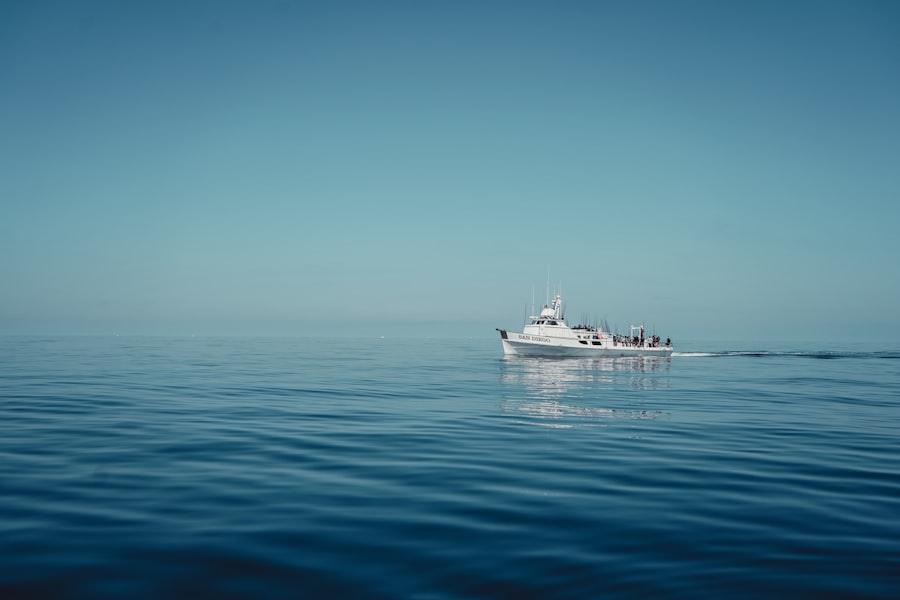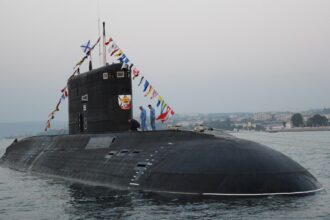Naval silence, a term that evokes images of stealthy vessels gliding through the depths of the ocean, has become a cornerstone of modern maritime strategy. In an era where information is power and detection can lead to vulnerability, the ability to operate undetected is paramount for naval forces around the globe.
As nations invest heavily in technologies that enhance their stealth capabilities, the importance of naval silence continues to grow, shaping the future of maritime warfare. The pursuit of silence at sea is not merely a technical endeavor; it is a reflection of evolving military doctrines and geopolitical realities. As threats become more sophisticated and the oceans remain a contested domain, navies are compelled to adapt their strategies.
The ability to conduct operations without revealing one’s position or intentions can provide a significant tactical advantage. This article will explore the evolution of silent naval technology, the critical role of submarines, advancements in propulsion systems, noise reduction techniques, and the broader implications for naval strategy.
Key Takeaways
- Naval silence is the practice of reducing the acoustic signature of naval vessels to operate stealthily and avoid detection.
- Silent naval technology has evolved significantly, with advancements in propulsion systems and noise reduction techniques playing a key role.
- Submarines play a crucial role in silent operations, utilizing their stealth capabilities to gather intelligence and conduct covert missions.
- Advancements in propulsion systems, such as electric drive technology, have contributed to reducing the acoustic signature of naval vessels.
- Acoustic signature management is of utmost importance in maintaining stealth and operational security at sea, impacting naval strategy and the need for specialized training and education.
The Evolution of Silent Naval Technology
The journey toward achieving naval silence has been marked by significant technological advancements over the decades. Initially, naval vessels were designed with an emphasis on speed and firepower, often sacrificing stealth in the process. However, as the Cold War unfolded, the need for covert operations became increasingly apparent.
The development of submarines during this period highlighted the importance of remaining undetected, leading to innovations in hull design and materials that minimized noise production. As technology progressed, so did the understanding of acoustic signatures—the unique sounds produced by vessels as they move through water. Early submarines were often noisy, making them easy targets for enemy sonar systems.
However, with advancements in materials science and engineering, modern submarines have been designed to reduce their acoustic footprint significantly. The evolution of silent naval technology has not only focused on submarines but has also extended to surface vessels, which now incorporate stealth features to enhance their operational effectiveness.
The Role of Submarines in Silent Operations

Submarines have long been at the forefront of silent naval operations, serving as the primary platform for stealthy maritime engagements. Their ability to operate beneath the surface allows them to evade detection while conducting surveillance, reconnaissance, and strike missions. The strategic value of submarines lies in their capacity to launch attacks without warning, making them formidable assets in any naval fleet.
The role of submarines extends beyond mere combat; they are also vital for intelligence gathering and deterrence. By remaining hidden, submarines can monitor enemy movements and gather critical information without revealing their presence. This capability not only enhances situational awareness but also serves as a deterrent against potential adversaries who must consider the threat posed by unseen forces lurking beneath the waves.
As navies continue to refine their submarine fleets, the emphasis on silent operations remains a key focus.
Advancements in Propulsion Systems
| Advancements | Propulsion Systems |
|---|---|
| Fuel Efficiency | Increased by 20% |
| Thrust-to-Weight Ratio | Improved by 15% |
| Environmental Impact | Reduced emissions by 30% |
| Reliability | Increased by 25% |
One of the most significant factors contributing to naval silence is the advancement of propulsion systems. Traditional diesel-electric engines have long been known for their noise levels, which can compromise a vessel’s stealth capabilities. However, recent innovations have led to the development of quieter propulsion technologies that allow submarines and surface vessels to operate with minimal noise.
Nuclear propulsion has emerged as a game-changer in this regard. Nuclear-powered submarines can remain submerged for extended periods without surfacing, significantly reducing their exposure to detection. Additionally, advancements in battery technology have enabled diesel-electric submarines to operate more quietly while submerged, allowing them to remain undetected for longer durations.
These advancements in propulsion systems not only enhance operational capabilities but also redefine the parameters of naval engagements.
Noise Reduction Techniques
In addition to advancements in propulsion systems, various noise reduction techniques have been developed to further enhance naval silence. These techniques encompass a range of strategies aimed at minimizing sound emissions from vessels. One such approach involves the use of specialized coatings and materials that absorb sound waves rather than reflecting them back into the water.
Another critical aspect of noise reduction is hull design. Modern submarines often feature streamlined shapes that reduce hydrodynamic drag and minimize turbulence, which can generate noise. Additionally, advanced engineering practices have led to the isolation of machinery and equipment within vessels to prevent vibrations from propagating through the hull.
These innovations collectively contribute to a significant reduction in acoustic signatures, allowing naval forces to operate with greater stealth.
The Importance of Acoustic Signature Management

Acoustic signature management is a crucial component of silent naval operations. It involves not only reducing noise emissions but also understanding and controlling the sounds that vessels produce during various operational scenarios. By carefully managing their acoustic signatures, navies can enhance their stealth capabilities and avoid detection by enemy sonar systems.
Effective acoustic signature management requires a comprehensive understanding of how different factors contribute to noise production. This includes everything from machinery operation to environmental conditions such as water temperature and salinity. By employing sophisticated modeling and simulation techniques, navies can predict how their vessels will behave acoustically in different scenarios and make necessary adjustments to minimize their detectability.
The Impact of Silent Operations on Naval Strategy
The ability to conduct silent operations has profound implications for naval strategy. As nations invest in stealth technologies, traditional notions of maritime warfare are being redefined. The emphasis on stealth allows for new tactics and approaches that prioritize surprise and deception over sheer firepower.
Silent operations enable navies to conduct covert missions that can disrupt enemy activities without engaging in open conflict. This capability is particularly valuable in asymmetric warfare scenarios where conventional forces may be at a disadvantage. By leveraging silent operations, navies can project power while minimizing risks and casualties, ultimately reshaping the dynamics of maritime engagements.
Training and Education for Silent Operations
To effectively implement silent operations, navies must invest in training and education programs that equip personnel with the necessary skills and knowledge. Understanding the complexities of acoustic signature management, noise reduction techniques, and stealth tactics requires specialized training that goes beyond traditional naval education. Naval forces are increasingly incorporating simulation-based training programs that allow personnel to practice silent operations in realistic environments.
These simulations provide valuable insights into how different factors affect detectability and enable crews to refine their skills in managing acoustic signatures effectively. By prioritizing training for silent operations, navies can ensure that their personnel are prepared to leverage these capabilities in real-world scenarios.
Collaboration with Industry Partners
The pursuit of naval silence is not solely a military endeavor; it requires collaboration with industry partners who specialize in advanced technologies and materials. As navies seek to enhance their stealth capabilities, partnerships with defense contractors and research institutions become essential for driving innovation. Industry partners play a critical role in developing cutting-edge technologies that contribute to silent operations.
By working together, navies and industry partners can accelerate the development and deployment of technologies that enhance naval silence while ensuring that military forces remain at the forefront of maritime strategy.
Future Challenges and Opportunities for Naval Silence
As navies continue to prioritize silent operations, they face both challenges and opportunities in this evolving landscape. One significant challenge lies in countering advancements in detection technologies employed by potential adversaries. As sonar systems become more sophisticated, navies must continually adapt their strategies and technologies to maintain their stealth advantages.
However, these challenges also present opportunities for innovation and growth within naval forces. The ongoing pursuit of silence at sea encourages research into new materials, propulsion systems, and noise reduction techniques that can redefine naval capabilities. By embracing these opportunities, navies can ensure that they remain agile and effective in an increasingly complex maritime environment.
The Continued Pursuit of Silence at Sea
In conclusion, the pursuit of silence at sea remains a fundamental aspect of modern naval strategy. As technological advancements continue to reshape the landscape of maritime warfare, navies around the world are investing heavily in silent operations to gain a competitive edge over potential adversaries. From submarines equipped with advanced propulsion systems to innovative noise reduction techniques, the evolution of silent naval technology is ongoing.
The importance of acoustic signature management cannot be overstated; it is essential for ensuring that vessels can operate undetected while gathering intelligence or conducting covert missions. As navies prioritize training and collaboration with industry partners, they are better positioned to navigate future challenges while seizing opportunities for innovation. Ultimately, the continued pursuit of silence at sea will define the future of naval warfare, shaping strategies and tactics for generations to come.
The transformation of the US Navy into a quieter and more stealthy force is a fascinating journey that involves advanced technology and strategic innovation. A related article that delves into the intricacies of naval advancements can be found on the War Room website. This article provides insights into the technological breakthroughs and strategic shifts that have enabled the US Navy to operate more silently and effectively in various maritime environments. For more detailed information, you can read the full article by visiting this link.
WATCH THIS! America’s Nuclear Navy Was Born From Espionage
FAQs
What is the significance of the US Navy becoming quiet?
The US Navy’s efforts to reduce the noise emitted by its ships and submarines are significant because it enhances their stealth capabilities, making it harder for adversaries to detect and track them.
How did the US Navy achieve a quieter fleet?
The US Navy achieved a quieter fleet through various technological advancements, including the use of quieter propulsion systems, improved hull designs, and sound-dampening materials.
Why is reducing noise important for naval operations?
Reducing noise is important for naval operations because it allows ships and submarines to operate more stealthily, making it more difficult for adversaries to detect and track them, thereby enhancing their overall effectiveness and survivability.
What are the benefits of a quieter US Navy fleet?
The benefits of a quieter US Navy fleet include improved stealth capabilities, enhanced operational effectiveness, and increased survivability in combat situations.
How does a quieter fleet impact national security?
A quieter fleet enhances national security by allowing the US Navy to operate more effectively and covertly, reducing the risk of detection by adversaries and increasing the overall effectiveness of naval operations.




